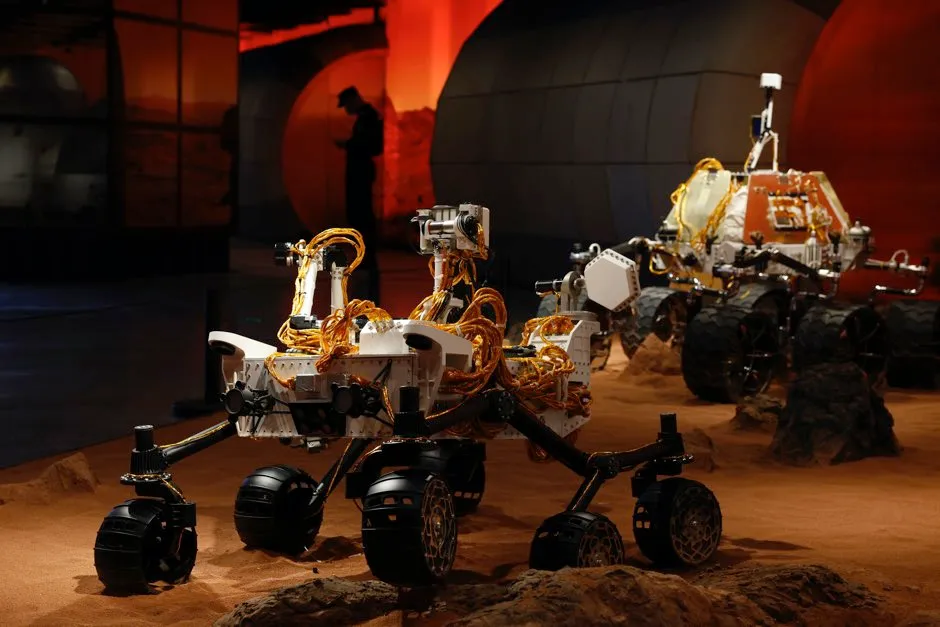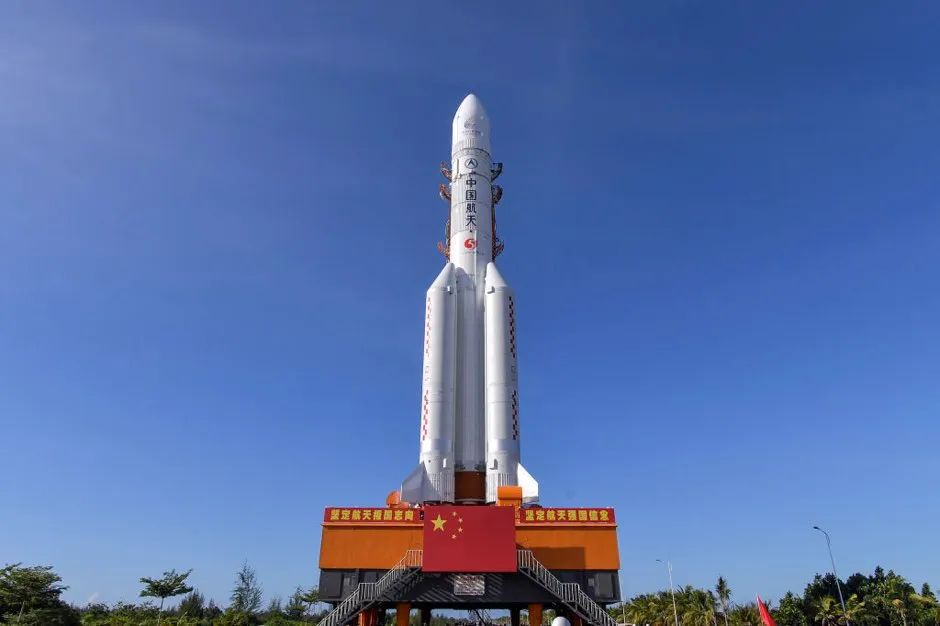China has launched its most ambitious Mars mission yet in a bold attempt to join the United States in successfully landing a spacecraft on the red planet.
Tianwen-1 was launched on a Long March-5 carrier rocket from Hainan Island, a resort province off the south coast of the mainland, state media said.
Livestreams showed a successful liftoff, with rockets blazing orange and the spacecraft heading upward across clear blue skies.
Hundreds of space enthusiasts cried out excitedly on a beach across the bay from the launch site.
Read more about Mars:
- Ingenuity: How the Mars helicopter will fly on another planet
- Marsquakes caused by tectonic activity, NASA’s InSight probe confirms
- Tim Peake: finding even a single cell on Mars would be “hugely significant”
- Signs of ancient flowing water found on Mars
It marked the second flight to Mars this week, after a United Arab Emirates orbiter blasted off on a rocket from Japan on Monday.
And the US is aiming to launch Perseverance, its most sophisticated Mars rover ever, from Cape Canaveral, Florida, next week.
China’s tandem spacecraft – with both an orbiter and a rover – will take seven months to reach Mars, like the others.
If all goes well, Tianwen-1, or “quest for heavenly truth”, will look for underground water, as well as evidence of possible ancient life.

This is not China’s first attempt at Mars.
In 2011, a Chinese orbiter accompanying a Russian mission was lost when the spacecraft failed to get out of Earth’s orbit after launching from Kazakhstan, eventually burning up in the atmosphere.
This time, China is going at it alone.
It is also fast-tracking, launching an orbiter and rover on the same mission instead of stringing them out.
Read more about China's space program:
- Chang'e 4: China's spacecraft reveals Moon's violent history
- Race to the Moon: Inside China's plans to build a lunar base
- Chang'e 4: how China's lander talks to us from the far side of the Moon
China’s secretive space programme has developed rapidly in recent decades.
Yang Liwei became the first Chinese astronaut in 2003, and last year Chang’e 4 became the first spacecraft from any country to land on the far side of the Moon.
Landing on Mars would put China in an elite club.
“There is a whole lot of prestige riding on this,” said Dean Cheng, an expert on Chinese aerospace programmes at the Heritage Foundation in Washington.

Landing on Mars is notoriously difficult.
Only the US has successfully landed a spacecraft on Martian soil, doing it eight times since 1976.
NASA’s InSight and Curiosity rovers still operate today.
Six other spacecraft are exploring Mars from orbit: three American, two European and one from India.
Read more about future space missions:
- 10 future space missions to look forward to
- Instant Genius: Future Space Exploration
- Move over, Mars: why we should look further afield for future human colonies
Unlike the two other Mars missions launching this month, China has tightly controlled information about the programme – even withholding any name for its rover.
National security concerns led the US to curb co-operation between NASA and China’s space programme.

In an article published earlier this month in Nature Astronomy, mission chief engineer Wan Weixing, who died in May from cancer, said Tianwen-1 would slip into orbit around Mars in February and look for a landing site on Utopia Planitia – a plain where NASA has detected possible evidence of underground ice.
The landing would then be attempted in April or May, according to the article.

If all goes well, the 240kg golf cart-sized, solar-powered rover is expected to operate for about three months, and the orbiter for two years.
Though small compared with America’s hulking, car-sized 1,025kg Perseverance, it is almost twice as big as the two rovers China sent to the Moon in 2013 and 2019.
Perseverance is expected to operate for at least two years.
This Mars-launching season – which occurs every 26 months when Earth and Mars are at their closest – is especially busy.
The UAE spacecraft Amal, or Hope, which will orbit Mars but not land, is the Arab world’s first interplanetary mission.
NASA’s Perseverance rover is up next.
“At no other time in our history have we seen anything like what is unfolding with these three unique missions to Mars. Each of them is a science and engineering marvel,” the Space Foundation’s chief executive officer Thomas Zelibor said in an online panel discussion earlier this week.

China’s road to Mars has hit a few bumps: a Long March-5 rocket, nicknamed Fat 5 because of its bulky shape, failed to launch earlier this year.
The coronavirus pandemic forced scientists to work from home.
In March, when instruments needed to be transported from Beijing to Shanghai, three team members drove 12 hours to deliver them.
While China is joining the US, Russia and Europe in creating a satellite-based global navigation system, experts say it is not trying to overtake the US lead in space exploration.
Instead, Mr Cheng said China is in a “slow race” with Japan and India to establish itself as Asia’s space power.
Reader Q&A: Why do we never see video footage from Mars?
Asked by: Richard O’Neill, Glasgow
Video footage requires much higher data transmission rates than still images, and it can take several hours for NASA to receive just one high-resolution colour image from Mars.
Engineers are looking at switching from radio to infrared communication, because the much shorter wavelength offers far higher data rates. The next generation of Mars landers may then send back HD video imagery direct from the Red Planet.
Read more:
